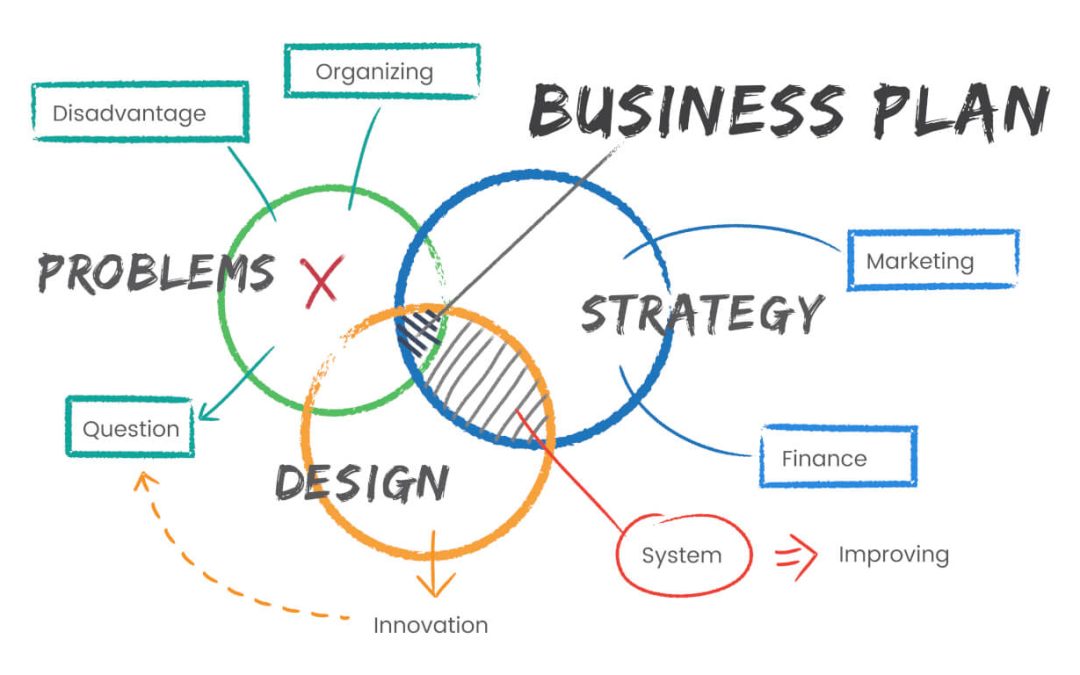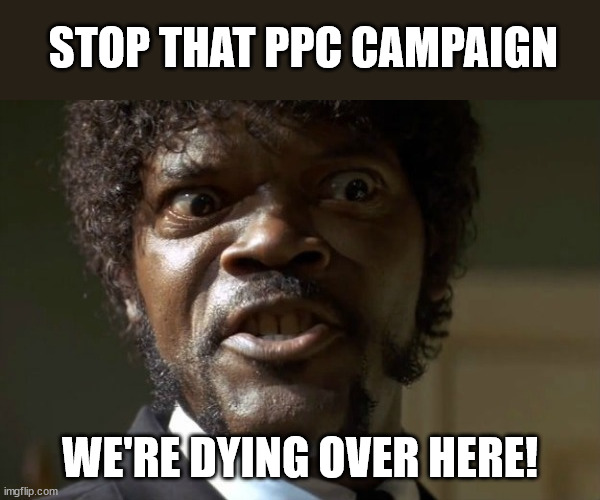Every company, at some point, struggles with building or keeping up with the existing workflow process.
Imagine this scenario: your projects run smoothly and then out of nowhere, one developer gets sick and stays two weeks on sick leave, another one gets overwhelmed with client’s work, and the third one doesn’t have the right skills to finish the project…
The entire workflow process just became very complicated in a matter of a few days or even hours.
The point is, if you want to build an efficient workflow, you need to be aware of the problems that you may come across first.
But, what is actually a workflow process?
A workflow process is a set of tasks which, when finished, will achieve a certain business goal.
This process includes all the rules, deadlines, and changes that may happen while completing the tasks.
Here’s one good example for content approval workflow:
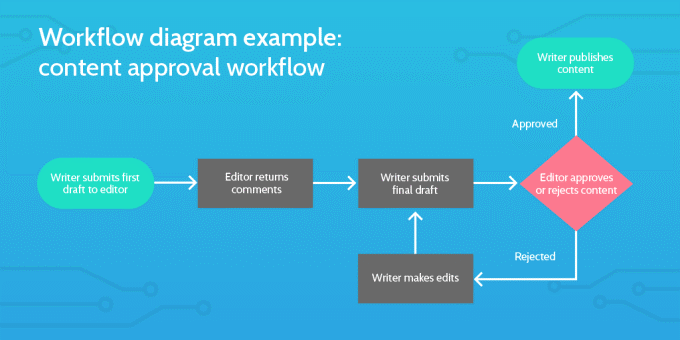
Image Source: What is a Workflow?
What Are The Biggest Challenges When Building The Workflow Process?
That being said, finishing a task is not always smooth sailing.
Small and big problems may arise in the workflow process as we saw from the example above.
Now, let’s take a look at some of the most common problems agencies struggle with.
1. Poor Communication Between Employees, Teams & Departments
This might be one of the biggest problems in the workflow process.
There are a ton of surveys done on this topic, but the latest one is by The Economist Intelligence Unit.
Between November 2017 and January 2018, 403 employees took part in this survey.
These were senior executives, managers, and junior staff, and they all had something to say about poor communication in their workplace.
According to this survey, the most significant consequences of poor communication are the following ones:
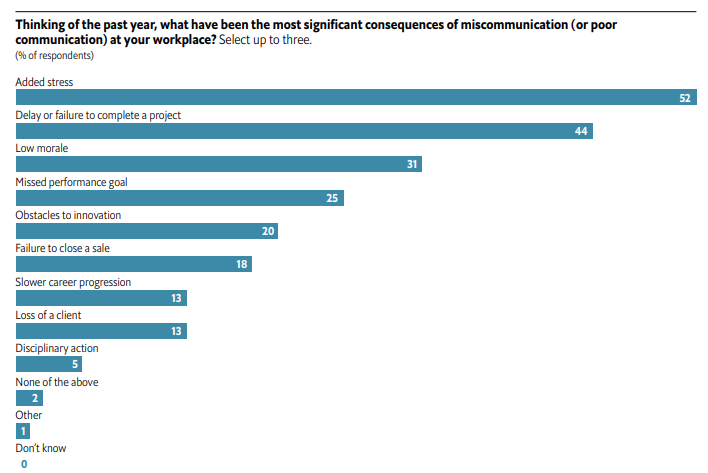
Image Source: The Economist Intelligence Unit
As you can see, nearly half of the respondents (44%) have said that poor communication affects the project.
Now, some agencies think that using software or programs will help in solving this problem so they are willing to invest some serious money to get as many tools as possible hoping for the best.
However, what business owners might fail to understand is that if there’s a lack of good and precise communication between employees, teams, and departments, all the software is basically good for nothing.
And, perhaps the hard truth is that your business may need something more than a software to solve the communication problem.
We’ll talk about that later in our blog post.
For now, let’s go back to other problems in the workflow process.
2. Unnecessary/Unproductive Meetings
You’re probably familiar with the meme – I’ve survived yet another meeting that should’ve been an email.
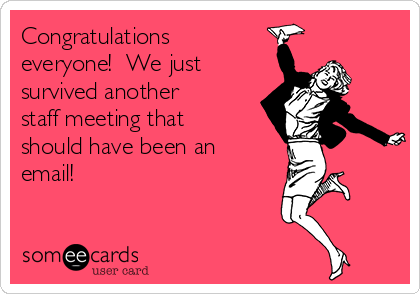
On a more serious note, meetings at work can be a big reason why the deadlines are not met and tasks not finished.
Let’s take a look at the same report we’ve mentioned previously and see the stats about the issue of the workflow process.

23% of the respondents have said that they feel the most stressed when they have to deal with too many unproductive meetings.
And, you can see there’s no other work-related issue that brings that much stress to the employees as unproductive meetings.
Unproductive meetings are a time-waster for both the employees and the company.
But it’s not just about the stress and wasted time. Meetings without a clear goal in mind cost your business a lot.
There’s even a calculator that can calculate how much your company loses with every unproductive meeting.
It’s available for both Android and iOS users.
Here’s the link – Estimate the Cost of a Meeting with This Calculator if you want to check it out.
3. Approvals Are Taking Too Long
Approvals are essential for a smooth workflow process.
Employees responsible for this job want to make sure that everything that’s an outcome of your company, no matter if the product or service, is of top quality.
For example, when it comes to copywriting, that person is the editor.
In the web development world, that person is the QA.
Approvals are a necessary part of the workflow and there’s no question about it.
The main problem arises when it’s taking too long to get that approval.
The reason might be in the workflow process itself, or, employees responsible for approvals are busy doing more important stuff, or some other reason entirely, like too many meetings perhaps.
Either way, not getting approval as soon as possible may cause the employee doing the task to miss the deadline.
You can visualize the circle of responsibilities and how they are interconnected, right?

As you can see, this is an issue that, if not solved, may cause bigger problems down the road to the effective workflow process.
4. How Stress Affects Workflow Efficiency?
As we already mentioned previously, poor communication is the core of many problems that may arise in the workflow process.
And, as you can already see, the added stress is the side effect of that issue.
But, stress, no matter what the reason, is a major obstacle to workflow efficiency and because of it, unfortunately, deserves to be mentioned here.
52% of all the respondents have said that stress is the consequence of poor communication.

So, what does that stress do to a workflow process that runs pretty good?
Well, the stress at the workplace has an effect on productivity or in the workflow process in multiple ways:
- Employees are finishing tasks much slower than usual
- A rise in the number of unfinished or skipped tasks
- The number of sick leave days may arise
- Low quality on the outcome job
- A rise in staff turnover
One might think that these are more personal issues rather than obstacles in maintaining a good workflow process. But, each one of these problems is painting a bigger picture. And, not paying attention to them can cause even bigger problems in the long run. Which leads us to the following title.
The Real Costs Of Ineffective Workflow Process

Poor communication, unnecessary meetings or stress at the workplace are not bad just for the general wellbeing of your employees. It also affects their productivity. And that affects your business.
Another report by Holmes has uncovered the truth off how much problems in the workflow process really cost.
For the record, the report is from the distant 2011 and these numbers may be even bigger nowadays. But this is by far, the most detailed report and one that is mostly used to this day.
Let’s see how the consequences are measured in this report:
“As usual, data show us how hefty the cost of poor communication can be:
- $37 billion: total estimated cost of employee misunderstanding (including actions or errors of omission by employees who have misunderstood or were misinformed about company policies, business processes, job function or a combination of the three) in 100,000-employee companies, among 400 surveyed corporations in the U.S. and U.K. (average cost per company is $62.4 million per year)
- $26,041: cumulative cost per worker per year due to productivity losses resulting from communications barriers”
These numbers speak for themselves.
Any problems that are costing businesses 37 billion dollars are not to be underestimated.
The only road to improving the workflow process is to come up with a productive and doable plan for all the recurring tasks or projects your agency might have.
Instead of having a working environment that makes the workflow process harder, focusing on increasing efficiency will improve the workflow process in general.
How To Improve Employee’s Efficiency By Building The Right Workflow Process

Your company’s workflow process is a living thing – it’s created in cooperation with your employees and it can be changed by them too.
However, to build an efficient workflow process that will turn out to be really productive at the end of the day, there are certain rules that your company needs to follow:
Have a Written Plan of your Workflow
It’s important for any supervisor to be familiar with the employees’ tasks; what are they currently working on and when is the deadline. This is called a workflow map.
It doesn’t have to be fancy or anything – you just have to find out what works best for your team.
For some, it’s enough if all of this is written on sticky notes (bear in mind they can get lost pretty easily so I wouldn’t recommend them).
For others, this needs to be perfectly organized in a CRM platform.
Whatever the way, it’s important that your workflow process is documented.
This way, your company is making sure that everyone knows their role in the company, their tasks, and deadlines. Also, this is how everybody is accountable for what they are doing and productivity, as a result, increases.
Listen to What your Employees have to say About the Workflow Process
At the end of the day, the employees are the ones that are obligated to do their part of the job under certain rules.
And if those rules are not giving them enough space for completing a task with 100% quality, then maybe it’s time to listen to their suggestions.
Rather than building a company culture of rules, it’s better if you listen to the people that are actually in charge of getting the job done.
Perhaps some tools can make the workflow easier or some minor changes in the working schedule.
For example, we use Populizr social media scheduling tool to ease the process of social media scheduling.
Whatever that might be, a business owner can’t provide a change without carefully listening to employees’ suggestions.
Prioritize the Tasks
Prioritizing tasks is a good way to ensure all deadlines are met. This is a good way to minimize the stress too because once everybody knows what and when they are supposed to finish something things will go more smoothly. Once a task is done, there is a sense of completion and achievement.
And, yes, ALL tasks are important, but there are always some tasks that are more important than others. Prioritizing your tasks allows you to decide which tasks to give more of your attention, time, and energy. This way, you give priority to the tasks that will move your business closer to your long term goals.
Know the Goals for Each Meeting
Meetings are crucial for communicating precise goals or any unresolved miscommunication issues.
However, as we already pointed out, there are a lot of unproductive meetings out there. 67%, to be exact.
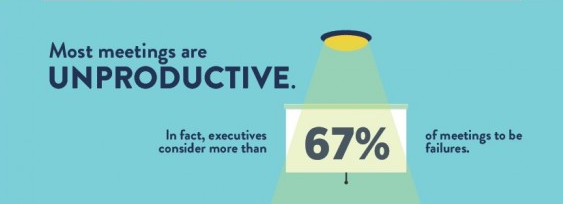
Image Source: Infographic: The Cost of Unproductive Meetings
That’s why knowing the goal for every meeting is crucial so that no one feels like they are wasting time.
Also, after a concise and precise meeting, everybody always feels energized and ready to take on new assignments with more vigor and excitement.
This is yet another way you can improve the atmosphere at work, so make sure to use it.
Update the Workflow Process when Needed
You probably know the rule – if you are using the same workflow for years and experiencing inconsistent or negative results, here’s a reality check for you:
Workflow processes are not designed to stay the same forever.
People improve and get faster and better at completing their tasks as they learn new things, tasks and projects change. This means you have to embrace a mentality of change and growth.
In time you will have to adapt your workflow process accordingly. And even if it sounds like a big fuss, it is actually not and it will pay off in the long run. Because, as you improve as an agency, you can serve more clients. More clients, more income, etc.
To Sum Up

If you want to build a successful workflow process, first you need to be aware of all the ‘red flags’ that you may come across.
Those might be:
- Poor communication between employees, teams, and supervisors or team leaders
- Big influence of stress on the workflow process
- Waiting too long for approvals
- Unproductive meetings
Any of these challenges may cause even bigger problems if they stay unresolved.
You can definitely improve your workflow process with certain tools like Slack of Teamwork, for fast and easy employee communication and sharing documents, while CRM platforms will help you with your task and project organization.
As I already mentioned, we use Populizr as our go-to social media automation tool to schedule posts and share social updates.
But, you still can’t rely solely on software. There will be some challenges that won’t be that easy to solve.
That’s why you should be familiar with other solutions that can increase the efficiency of your workflow process, such as:
- Have written documentation of the workflow process
- Let your employees have a say in the workflow
- Prioritize your tasks to meet the deadlines
- Know the goals for each meeting
- Update the workflow when needed
If you see or witness something in your workflow that doesn’t work, change it.
If an employee comes up to you with valuable arguments about the process, consider it.
The workflow process is extremely important for completing the tasks on time and improving it will definitely increase the productivity and efficiency of your employees in the long run. It will also help in building a positive working atmosphere once everybody is clear what their tasks are.
Don’t forget though, that the human factor is the most important to keep your team happy. Hire HR and make sure to talk to your employees from time to time to hear what they are struggling with. If there is something that should be solved, you can help with that, and sometimes just talking helps.
Do you have any other observations or questions on this subject? Please, feel free to leave a comment and let’s talk about it.


